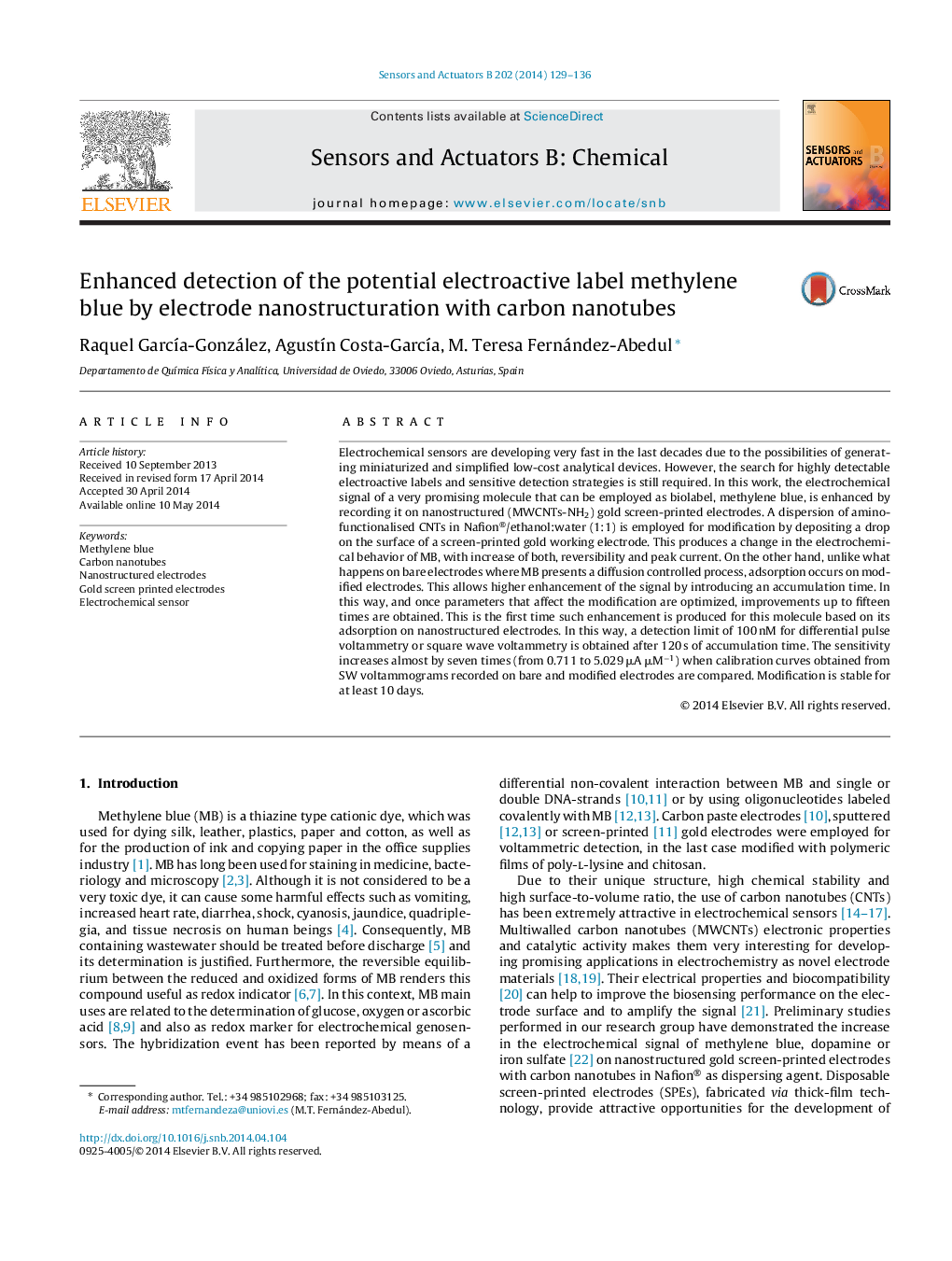| Article ID | Journal | Published Year | Pages | File Type |
|---|---|---|---|---|
| 742656 | Sensors and Actuators B: Chemical | 2014 | 8 Pages |
Electrochemical sensors are developing very fast in the last decades due to the possibilities of generating miniaturized and simplified low-cost analytical devices. However, the search for highly detectable electroactive labels and sensitive detection strategies is still required. In this work, the electrochemical signal of a very promising molecule that can be employed as biolabel, methylene blue, is enhanced by recording it on nanostructured (MWCNTs-NH2) gold screen-printed electrodes. A dispersion of amino-functionalised CNTs in Nafion®/ethanol:water (1:1) is employed for modification by depositing a drop on the surface of a screen-printed gold working electrode. This produces a change in the electrochemical behavior of MB, with increase of both, reversibility and peak current. On the other hand, unlike what happens on bare electrodes where MB presents a diffusion controlled process, adsorption occurs on modified electrodes. This allows higher enhancement of the signal by introducing an accumulation time. In this way, and once parameters that affect the modification are optimized, improvements up to fifteen times are obtained. This is the first time such enhancement is produced for this molecule based on its adsorption on nanostructured electrodes. In this way, a detection limit of 100 nM for differential pulse voltammetry or square wave voltammetry is obtained after 120 s of accumulation time. The sensitivity increases almost by seven times (from 0.711 to 5.029 μA μM−1) when calibration curves obtained from SW voltammograms recorded on bare and modified electrodes are compared. Modification is stable for at least 10 days.
